Archives
special feature
Everyone knows that N.E.F.A. or the North Eastern Frontier Agency, in the past, came to have the name Arunachal Pradesh as late as 1972. What came to me as a real surprise though was that the country became aware of this region and its people only after China had perpetrated her unfortunate intrusion of the North East in 1962.
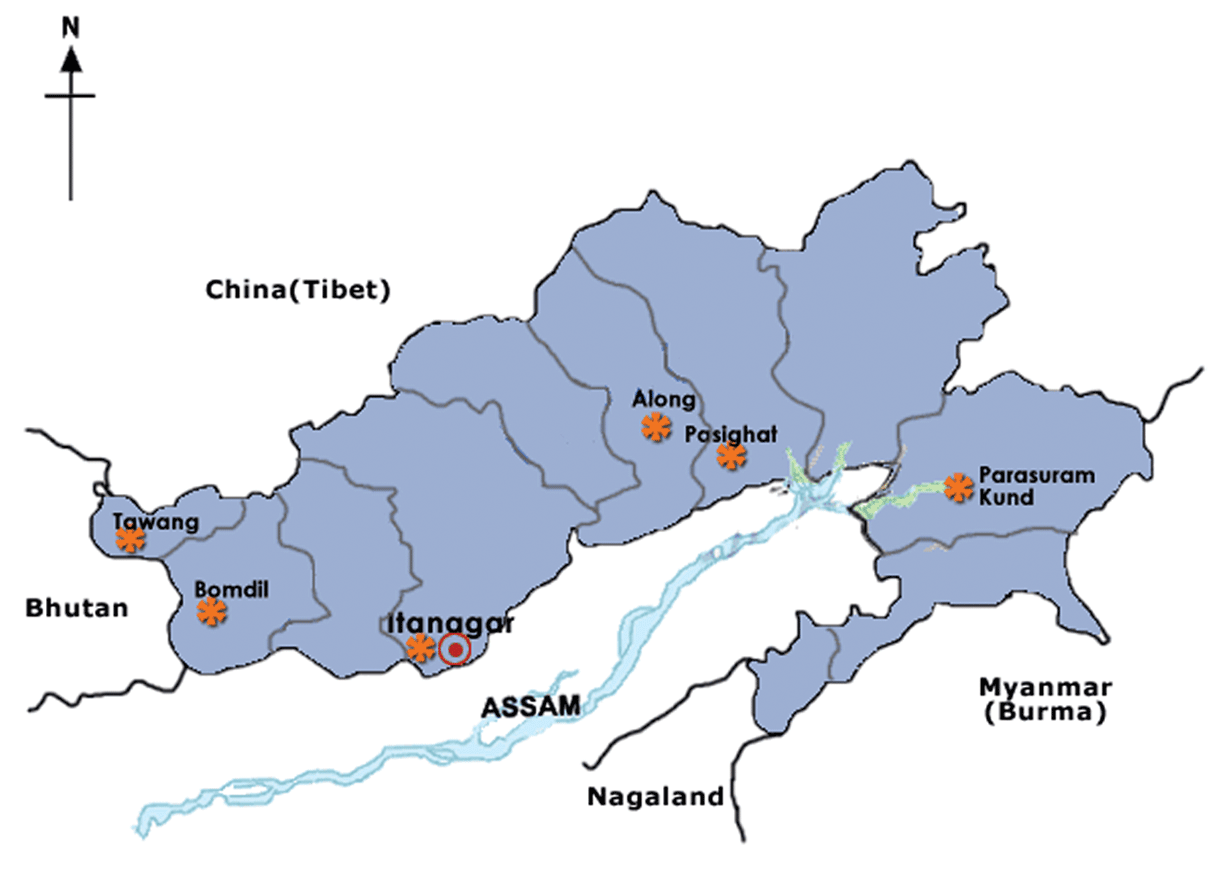 The ‘Inner Line’ restriction or ‘Pax Britannica’ of the British had, for centuries, kept the tribal people here away from the mainstream. D. N. Majumdar writes as much in his 1978 Survey of India treatise. The ‘near self-sufficient economy’ and the even tenor of an all but primitive existence did not give the tribes of N.E.F.A. much incentive to come into contact with the people from outside. In the pre-1962 days, says B.K.Roy Burman, in his Demographic and Socio-economic Profile of the North East India, in the whole of N.E.F.A., there were no community centres; there were no restaurants and eating houses. Thee were also no rest houses, no school buildings, and no facility for medical treatment except at a few administrative centres.
The ‘Inner Line’ restriction or ‘Pax Britannica’ of the British had, for centuries, kept the tribal people here away from the mainstream. D. N. Majumdar writes as much in his 1978 Survey of India treatise. The ‘near self-sufficient economy’ and the even tenor of an all but primitive existence did not give the tribes of N.E.F.A. much incentive to come into contact with the people from outside. In the pre-1962 days, says B.K.Roy Burman, in his Demographic and Socio-economic Profile of the North East India, in the whole of N.E.F.A., there were no community centres; there were no restaurants and eating houses. Thee were also no rest houses, no school buildings, and no facility for medical treatment except at a few administrative centres.
1962 saw a rude awakening from this age-old slumber and apathy. S. Sarin writes in his ‘India’s North East in Flames’ (1980): ‘The Red Chinese dragon raced through the blue mountains of the North East Frontier Agency in the black year of 1962 like a hurricane spitting fire and demolishing every obstacle that came in its way till it reached the foothills of Kameng, close to the plains of Assam, leaving behind a trail of death and devastation.’ Arunachal Pradesh is still bearing the brunt of that stunning intrusion. Only the other day the Chinese refused to accept the only Arunachali member of an Indian Telecom team asserting that since Arunachal Pradesh belonged to China, the Chinese could not accept someone from there as an Indian citizen!
But the blow had come as a blessing in disguise. Soon after the ignominy of the debacle, Nehru’s government  took up developmental activities in N.E.F.A. on a war footing. What was inaccessible once now had a network of road communication. Government offices were set up in the district towns and even in the interior circle headquarters. People from other parts of the country came with their ‘mantra’ of progress and prosperity. In his ‘Social Movements in Arunachal Pradesh: A Search for Answers’ (1990), T. Mibang mentions with gratitude the ‘engineers and teachers who had spent a major part of their youthful days in the service of the tribal people of this difficult terrain with missionary zeal, and whom we, the tribal people remember as our guides and teachers.’ Education came to be the magic wand of transformation. T. Bhattacharjee writes in his ‘Social change in Arunachal Pradesh’ that in 1990 there were about one thousand primary schools, two hundred middle schools, four-degree colleges, one university for higher education and a science and technological institute. The two following decades had been decades of all round development.
took up developmental activities in N.E.F.A. on a war footing. What was inaccessible once now had a network of road communication. Government offices were set up in the district towns and even in the interior circle headquarters. People from other parts of the country came with their ‘mantra’ of progress and prosperity. In his ‘Social Movements in Arunachal Pradesh: A Search for Answers’ (1990), T. Mibang mentions with gratitude the ‘engineers and teachers who had spent a major part of their youthful days in the service of the tribal people of this difficult terrain with missionary zeal, and whom we, the tribal people remember as our guides and teachers.’ Education came to be the magic wand of transformation. T. Bhattacharjee writes in his ‘Social change in Arunachal Pradesh’ that in 1990 there were about one thousand primary schools, two hundred middle schools, four-degree colleges, one university for higher education and a science and technological institute. The two following decades had been decades of all round development.
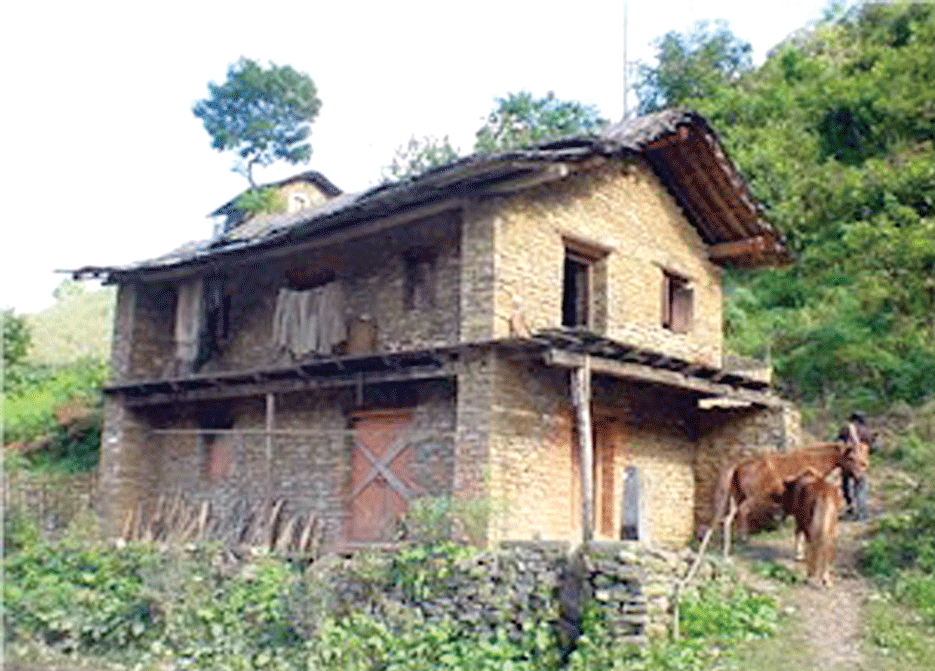 But all these are stories of a later day, and in them our Sang Doma plays her role as an educated and free woman. What about the place and its people? Shouldn’t we have at least a bird’s eye view of them?
But all these are stories of a later day, and in them our Sang Doma plays her role as an educated and free woman. What about the place and its people? Shouldn’t we have at least a bird’s eye view of them?
Erstwhile N.E.F.A. now Arunachal Pradesh, shares its borders with the Chinese occupied Tibet in the north, Myanmar in the east, Bhutan in the west and Nagaland and Assam in the south. With a land area of 83743 square k.m.s.. it is the largest among the North Eastern states. The sparsely populated region has almost 80% of its land under forest cover. Consequently it teems with lush green forests, deep river valleys, and beautiful plateaus. Mostly mountainous, Arunachal Pradesh has the Himalayan range running along the north and the south, dividing the state into five river valleys. These are the Kameng, the Subansiri, the Siang, the Lohit and the Tirap. Perennially fed by the Himalayan snow, the garlands and the bangles of innumerable rivers and rivulets here, never lose their sheen. The climate differs remarkably from the rest of the country, and is dominated by the Himalayan system and altitudinal variations. It 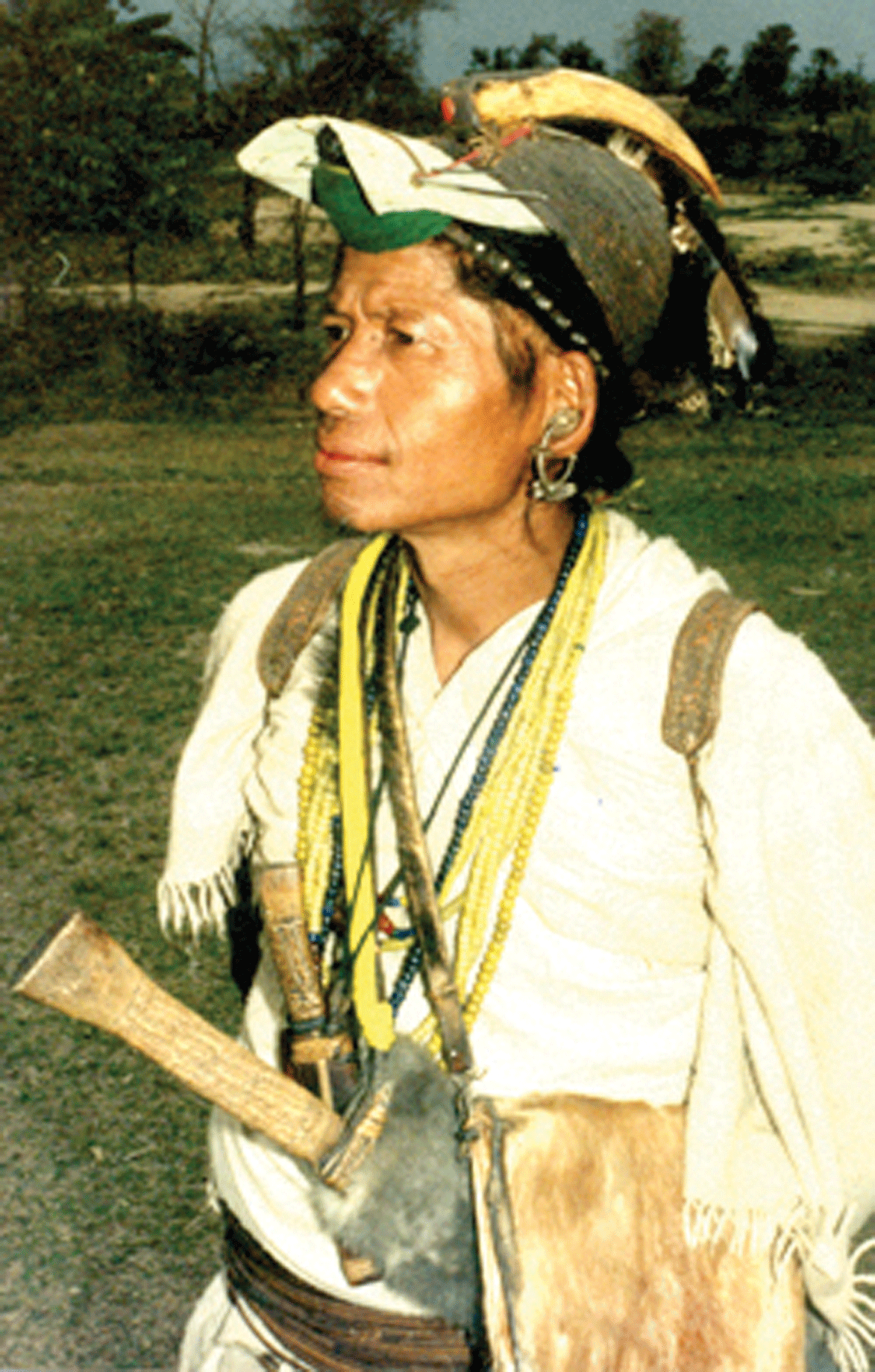 is particularly the eastern section of the state that has swampy, dense forests. The lower altitude makes these eastern valleys hot and humid. As one travels from there to the higher reaches in the rest of the state, one feels the dipping mercury in one’s rattling bones! The rainfall is one of the heaviest in the country; touching an annual level of more than 350 centimeters.
is particularly the eastern section of the state that has swampy, dense forests. The lower altitude makes these eastern valleys hot and humid. As one travels from there to the higher reaches in the rest of the state, one feels the dipping mercury in one’s rattling bones! The rainfall is one of the heaviest in the country; touching an annual level of more than 350 centimeters.
Who are the people that live in the midst of this variety? They themselves are extremely colourful with all their differences. Originating from the same Mongoloid stock, the people here have flowered into twenty-six major tribes as well as a number of sub-tribes. Geographical isolation from one another and climatic variations have given rise to distinctive features of language, dress and customs among the tribes.
There are three main and distinct cultural groups in Arunachal Pradesh, marked by socio-political and religious affinities or otherwise. The Monpas and the Sherdak Pens of Tawang and West Kamang districts follow the lamaistic tradition of Mahayana Buddhism. Similar to them in matters of culture and religion are the Membas and the Khembas who live in the high mountains along the northern border. The Khamptis and the Singphas, living in the eastern part of the state, are Buddhists of the Hinayana sect. It is said that they had migrated from Thailand and Myanmar long ago, and still use ancient scripts brought from their original homeland.
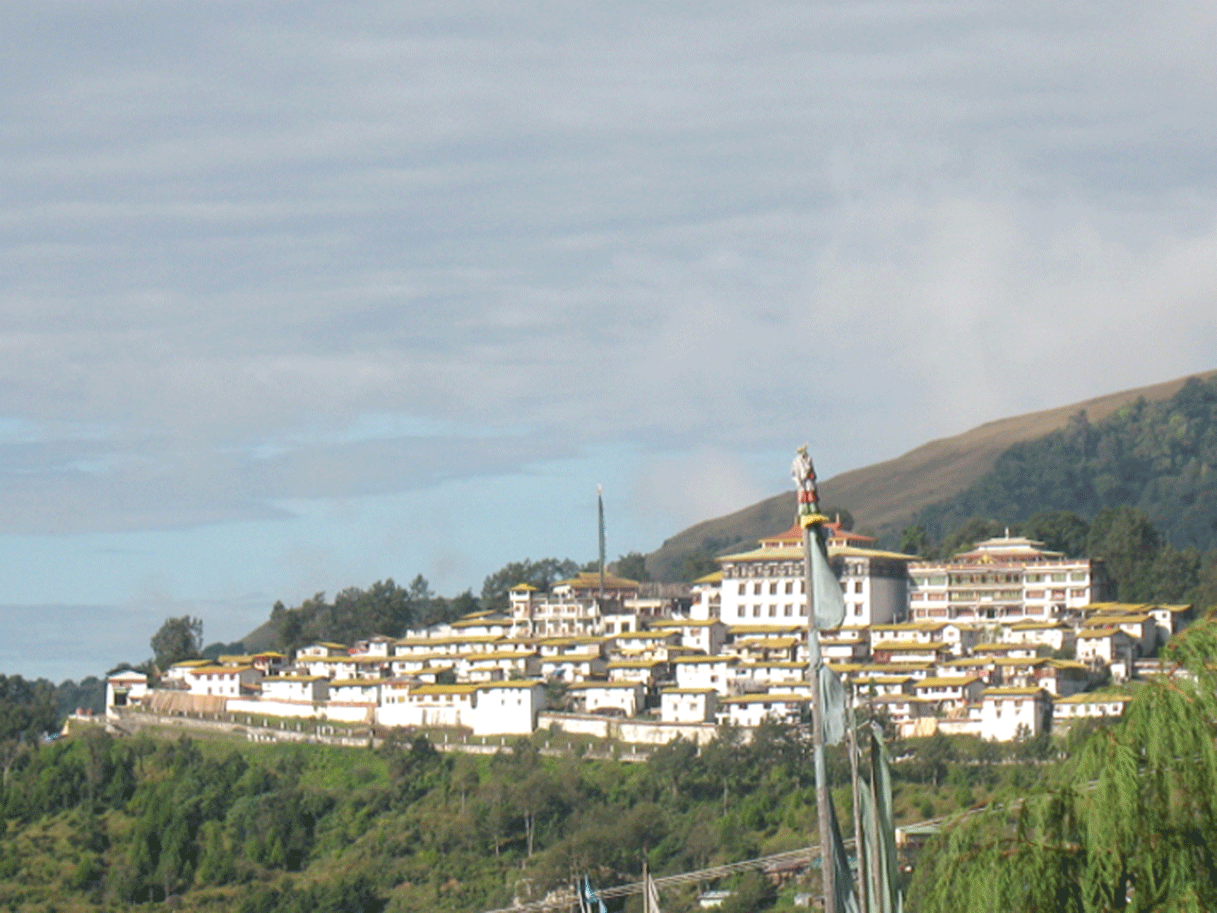 The second cluster of tribes is formed by the Adis, the Akas, the Apatanis, the Bungnis, the Nyishis, the Mishmis, the Mijis, the Thangsos and others. They worship the sun god or Donyi-Polo and the moon god or Abo-Tani, who are supposed to be the original ancestors of most of the tribes. Their religious rituals largely coincide with phases of agricultural cycles.
The second cluster of tribes is formed by the Adis, the Akas, the Apatanis, the Bungnis, the Nyishis, the Mishmis, the Mijis, the Thangsos and others. They worship the sun god or Donyi-Polo and the moon god or Abo-Tani, who are supposed to be the original ancestors of most of the tribes. Their religious rituals largely coincide with phases of agricultural cycles.
The Noctes and the Wanchos of the Tirap district bring up the third group. They are hardy people know for their structured village society, with a hereditary village chief. The noctes practice an elementary form of Vaishnabhism.
Let us look more closely at some of these tribes. The Adis have two main divisions with lots of sub-tribes. Democratic by nature, they honour their Kebang or the village council. Polyandry is unknown among the Adis but polygamy is often practiced by them. The Adi women are excellent weavers.
The Apatanis are good cultivators. Apatani men and women no longer follow the traditional practice of tying the 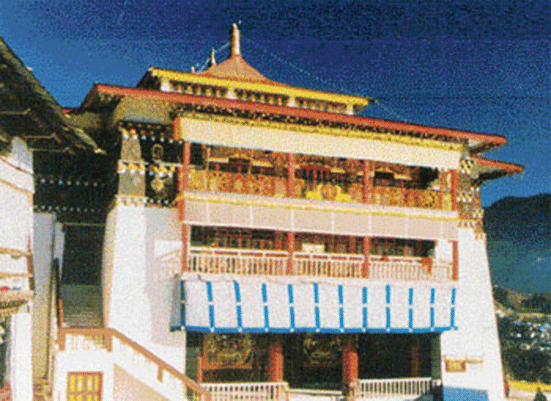 hair in top-knots, tattooing their faces and wearing nose-plugs. They have a stable economy, with paddy and fish as its mainstay.
hair in top-knots, tattooing their faces and wearing nose-plugs. They have a stable economy, with paddy and fish as its mainstay.
The Akas paint their faces with black marks, and believe that they are related to the Ahom kings. Keen traders by tradition, they trade mainly in clothes, blankets and swords The Mishmis, too, are traders, their main wares being deer-musk, wild medicinal plants, animal skins, Mishmi-tita etc.
The Singphos represent a section of the Kachin tribe of Myanmar. They are farmers and blacksmiths. The Khamtis, too, are believed to have migrated from the Shan states of Myanmar. They are the only tribe in Arunachal Pradesh with a script of their own. Although Hinayana Buddhists, they bury their dead in coffins.
The Monpas are simple, gentle are courteous by nature, and have a rich heritage of culture. They wear clothes with pleasing artistic designs. They live in Tawang and profess the Mahayana variety of Buddhism.
The Nyishis form the largest group of people in the lower Subansiri district. The men wear their hair long, and tie it in a knot just above the forehead. The Nyishis believe that the spirit of the dead comes to the ancestral village.
.gif) Among the places of interest in Arunachal Pradesh, Tawang, of course, is the cynosure, since it houses a century-old Buddhist monastery. I have already told you that Sang Doma is a Buddhist herself. On one’s way to Tawang one has to pass what is the second highest pass in the world at fourteen thousand feet, known as the Sella pass. It runs through a small ridge, and along the Paradise Lake. Tawang is at a height of ten thousand feet, and holds the second largest monastery in Asia, known as Galden Namgyel Lhatse. Its four hundred years of existence have always been devoted to love, learning and purity of life. The fortified complex covers an area of 135 square meters enclosed by a 610-meter-long compound wall. It houses 65 residential buildings, and ten other structures. The library here accommodates about 850 bundles of extremely valuable old scriptures. The lamas are both Tibetans and Monpas. The Shyo village in Tawang has mostly people of Tibetan origin.
Among the places of interest in Arunachal Pradesh, Tawang, of course, is the cynosure, since it houses a century-old Buddhist monastery. I have already told you that Sang Doma is a Buddhist herself. On one’s way to Tawang one has to pass what is the second highest pass in the world at fourteen thousand feet, known as the Sella pass. It runs through a small ridge, and along the Paradise Lake. Tawang is at a height of ten thousand feet, and holds the second largest monastery in Asia, known as Galden Namgyel Lhatse. Its four hundred years of existence have always been devoted to love, learning and purity of life. The fortified complex covers an area of 135 square meters enclosed by a 610-meter-long compound wall. It houses 65 residential buildings, and ten other structures. The library here accommodates about 850 bundles of extremely valuable old scriptures. The lamas are both Tibetans and Monpas. The Shyo village in Tawang has mostly people of Tibetan origin.
The West Kameng district, with the lovely small town of Bomdila as its headquarters, fascinates tourists with its cool climate, lush apple orchards, grim Buddhist gompas and the snow-capped Himalayan peaks.
Bhismaknagar in the Dibang valley district is a sacred heritage of the Idu Mishmis. Discovery of the past glory of its civilization has made this place quite important.
The same is true of Malinithan, a temple site in ruins, at the Siang foothills. Akashi Ganga nearby is sacred as it is associated with the myth of Sati and Shankar.
Namdapha in the Changland district is famous for its wild life sanctuary. Another place called Tepi boasts of Asia’s largest orchidarium. It is just five kilometers from Bhalukpang. Dirang, at a distance of 42 kilometers from Bomdila is famous for its hot spring, and its apple and kiwi cultivation.
Itanagar has been the capital of the state since 1974. Its cosmopolitan milieu has made a mini India of the township here. The place is named after the historical Ita fort dating back to the fourteenth fifteenth centuries.
Does time move in this seat of pristine beauty and glory? It does, of course! Arunachal Pradesh has moved from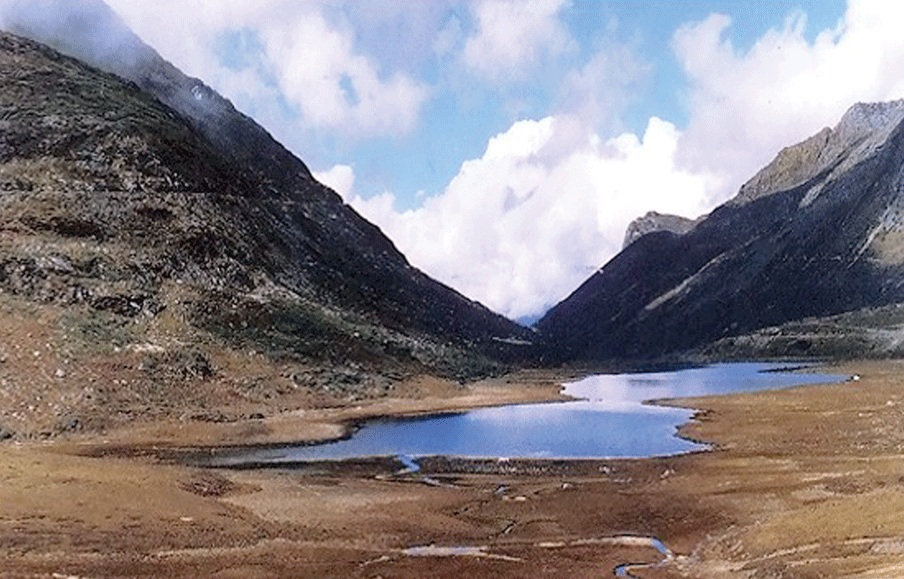 its British days of isolation through independence, through the Sino-Indian war to its present state of progress. Problems often give rise to murmurs of disapproval and anger. AAPSU, the student body of Arunachal Pradesh, followed the footsteps of AASU by initiating a movement here with a four point agenda. N. Jollaw wrote an article on this movement in Eastern Panorama dated September 1993. The break up of population in Arunachal Pradesh, as shown in that article, reveals that the grievance is not without a reason. The total population of the state in 1993 was approximately seven lakh. Out of this, more than two lakh accounted for the refugees and the outsiders in the state. One would like to know the present equation in the state. The border problem with Assam is a burning issue too.
its British days of isolation through independence, through the Sino-Indian war to its present state of progress. Problems often give rise to murmurs of disapproval and anger. AAPSU, the student body of Arunachal Pradesh, followed the footsteps of AASU by initiating a movement here with a four point agenda. N. Jollaw wrote an article on this movement in Eastern Panorama dated September 1993. The break up of population in Arunachal Pradesh, as shown in that article, reveals that the grievance is not without a reason. The total population of the state in 1993 was approximately seven lakh. Out of this, more than two lakh accounted for the refugees and the outsiders in the state. One would like to know the present equation in the state. The border problem with Assam is a burning issue too.
What about the status of women in the tribal societies of Arunachal Pradesh? After coming to know Sang Doma, a thirty six year old official who had come all the way from Arunachal Pradesh to Shillong to study B.B.C. English, I could not help asking that question. The answer is that they have gradually enjoyed a modicum of freedom. The age-old obstacles of polygamy practiced by some, the system of bride price and the unavoidable drudgery both at home and in the fields, have often bogged down the womenfolk.
With educational facilities opening up in the sixties and seventies, the situation has changed for the better. Today we see Sang Domas moving out of the state on their own. In their quest to better themselves they are knocking on the door of a life yet to come. Let us salute in these women the image of an ever-spreading emancipation.

